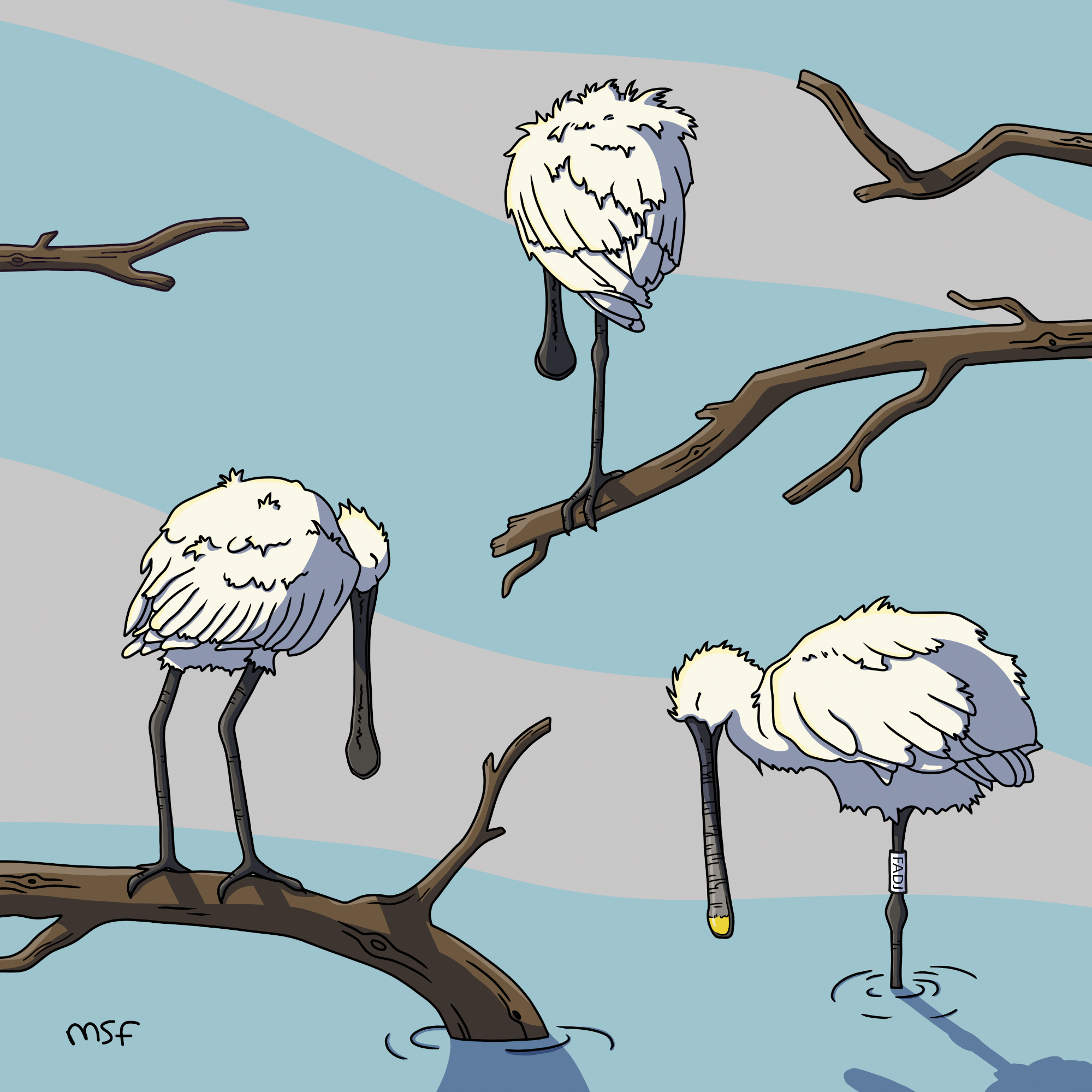Every year, spoonbills are color-ringed on Schiermonnikoog. The chicks that can almost fly are given a ring with their own color code. That means we can recognize them all individually. In the past, the chicks were given colored rings, but in recent years they have been given a white ring with letters and numbers on it. The first letter is the N of Netherlands. So great was our surprise when in mid-June in the Westerplas we saw a spoonbill with a white ring with the letters FADJ. Because rings with an F are put on the legs of young spoonbills in France in the Camargue nature reserve. The colleagues in the Camargue sent us the life history of the bird. It turned out that it was ringed in June 2019 and had been seen in Spain in 2021. It got even crazier, as we saw two more French spoonbills in Westerplas this summer. One of them walked with a begging chick behind him in July, meaning the French bird had been breeding with us.
Now it is not new for foreign spoonbills to breed on Schiermonnikoog. In the past decade we have seen a French spoonbill from the Loire Atlantique on a nest on the salt marsh, as well as spoonbills from Spain, Germany and Denmark. And probably more are breeding. Of course, if they don’t have rings on them, we don’t know where they were born.
How do the foreign spoonbills get here? Most likely, they met spoonbills from Schiermonnikoog in their wintering grounds in France, southern Europe or West Africa and came to Schiermonnikoog with them. Spoonbills migrate in groups and meet each other everywhere. In West Africa, for example, there are places where you can see Danish, German, Dutch, Belgian, French, Spanish, Portuguese and African spoonbills together on an island. Because spoonbills are very site-loyal, we expect that the French spoonbills we saw this summer in Westerplas will come to Schiermonnikoog again next year.
Translated with www.DeepL.com/Translator

At the end of the breeding season, the adult spoonbills need a break from weeks of feeding hungry youngsters - Illustration: Marycha Franken

